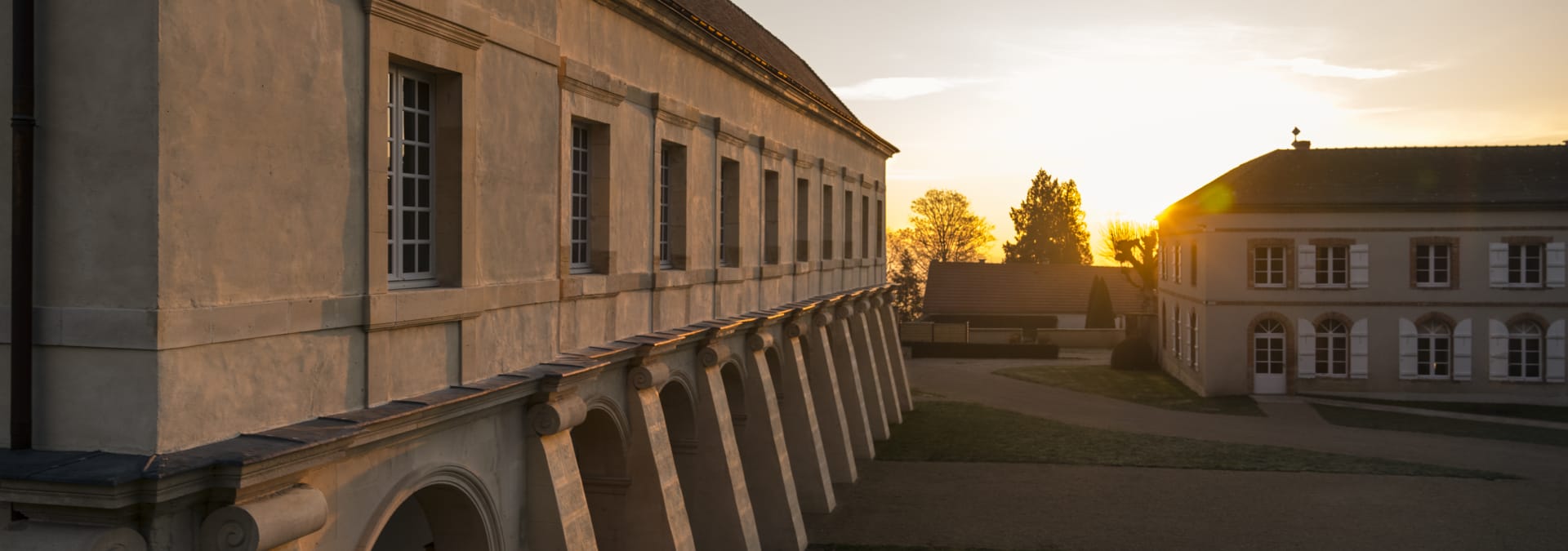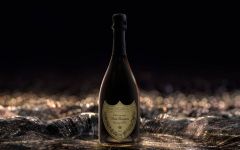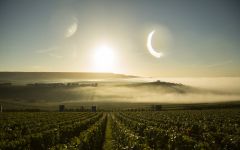Dom Perignon Vintage 2005
-
James
Suckling -
Wine
Enthusiast -
Jasper
Morris -
Wine
Spectator




Product Details
Your Rating
Somm Note
Winemaker Notes
Professional Ratings
-
James Suckling
I believe that the 2005 DP is the best since 2002, which remains the best recent vintage and is probably only eclipsed by the amazing 100-point 1996. The 2005 is a full-bodied DP with so much richness and loads of ripe fruit such as pineapple and papaya. It has a wonderful, creamy texture and a long and intense finish. It’s a Champagne that fully satisfies but at the same time challenges you with its strength, depth and persistence on the palate.
-
Wine Enthusiast
With some age, this is a gloriously ripe and toasty wine. It has a rich character emphasized by the round texture and the creamy mousse. It also has great concentration, bringing together acidity as well as dense secondary flavors. With its rich, mature character, it is best suited for food. It is ready to drink, but will hold well through 2025. Cellar Selection
-
Jasper Morris
2005 was a warm, ripe vintage that was only spoiled just before harvest by heavy rain showers (which promoted the spread of Botrytis, mainly in the Pinots). The winemaking team at Dom Perignon decided to embrace rather than fight the "noble rot" (this Champagne certainly had a marked bitter apricot note on the finish). Production was below average, and I was unsure how this would age. The apricot notes have been subsumed into a succulent creamy-walnut bouquet while shedding some fatness.
-
Wine Spectator
A rich version, with a streak of smoky minerality underscoring the flavors of clover honey, apple, blackberry and biscuit. Creamy in texture and persistent, presenting a long, sculpted finish. Drink now through 2030.
Other Vintages
2013-
James
Suckling -
Jasper
Morris - Decanter
-
Wine
Spectator -
Robert
Parker
- Decanter
-
Jeb
Dunnuck -
James
Suckling -
Jasper
Morris -
Robert
Parker -
Wine
Spectator
-
James
Suckling -
Wilfred
Wong -
Wine
Spectator -
Jasper
Morris - Decanter
-
James
Suckling -
Jasper
Morris - Decanter
-
Wilfred
Wong -
Wine
Spectator -
Robert
Parker
-
Wilfred
Wong -
James
Suckling -
Jasper
Morris -
Jeb
Dunnuck - Decanter
-
Wine
Spectator -
Robert
Parker
-
James
Suckling -
Jasper
Morris -
Robert
Parker -
Wine
Spectator
- Decanter
-
James
Suckling -
Wine &
Spirits -
Wine
Spectator -
Jasper
Morris -
Robert
Parker
-
Wine
Spectator -
Robert
Parker -
Wine &
Spirits
-
Robert
Parker -
Wine &
Spirits -
Wine
Spectator
-
Wine
Enthusiast -
Robert
Parker -
Wine &
Spirits -
Connoisseurs'
Guide -
Jasper
Morris -
Wine
Spectator
-
Robert
Parker -
Jasper
Morris -
Wine &
Spirits -
Wine
Spectator
-
Wine
Enthusiast -
Wine &
Spirits -
Jasper
Morris -
Robert
Parker
-
Robert
Parker -
Jasper
Morris -
Wine
Enthusiast -
Wine
Spectator
-
Jasper
Morris -
Wine &
Spirits -
Robert
Parker -
Wine
Enthusiast -
Wine
Spectator
-
Jasper
Morris -
Wine
Enthusiast -
Wine &
Spirits
-
Wine &
Spirits
-
Robert
Parker
-
Robert
Parker
-
Robert
Parker -
Wine
Spectator
-
Wine
Spectator
-
Robert
Parker -
Wine
Spectator










Dom Pérignon: an absolute commitment to Vintage
Dom Pérignon's commitment to vintage is absolute. Each Dom Pérignon is a true act of creation, made from only the best grapes. The champagne's intensity is based in precision, so inviting, so mysterious. Each Vintage has three Plénitudes, and embodies the total faith in the creation that is constantly renewed by Chef de Cave Vincent Chaperon. Coupled with a bold sense of playfulness, Dom Pérignon inspires the greatest creators in the world.Made only from the best grapes grown in one single year, each Dom Perignon's Vintage represents a harmonic balance between the nature of the year and the signature of Dom Pérignon. After no fewer than 8 years of elaboration, each vintage emerges complete, seamless and tactile. Dom Pérignon Champagne is made through an assemblage of Pinot Noir and Chardonnay, created by using only the best grapes harvested from the 17 Grands Crus in Champagne and the Premier Cru of Hautvillers.

Representing the topmost expression of a Champagne house, a vintage Champagne is one made from the produce of a single, superior harvest year. Vintage Champagnes account for a mere 5% of total Champagne production and are produced about three times in a decade. Champagne is typically made as a blend of multiple years in order to preserve the house style; these will have non-vintage, or simply, NV on the label. The term, "vintage," as it applies to all wine, simply means a single harvest year.

Associated with luxury, celebration, and romance, the region, Champagne, is home to the world’s most prized sparkling wine. In order to bear the label, ‘Champagne’, a sparkling wine must originate from this northeastern region of France—called Champagne—and adhere to strict quality standards. Made up of the three towns Reims, Épernay, and Aÿ, it was here that the traditional method of sparkling wine production was both invented and perfected, birthing a winemaking technique as well as a flavor profile that is now emulated worldwide.
Well-drained, limestone and chalky soil defines much of the region, which lend a mineral component to its wines. Champagne’s cold, continental climate promotes ample acidity in its grapes but weather differences from year to year can create significant variation between vintages. While vintage Champagnes are produced in exceptional years, non-vintage cuvées are produced annually from a blend of several years in order to produce Champagnes that maintain a consistent house style.
With nearly negligible exceptions, . These can be blended together or bottled as individual varietal Champagnes, depending on the final style of wine desired. Chardonnay, the only white variety, contributes freshness, elegance, lively acidity and notes of citrus, orchard fruit and white flowers. Pinot Noir and its relative Pinot Meunier, provide the backbone to many blends, adding structure, body and supple red fruit flavors. Wines with a large proportion of Pinot Meunier will be ready to drink earlier, while Pinot Noir contributes to longevity. Whether it is white or rosé, most Champagne is made from a blend of red and white grapes—and uniquely, rosé is often produce by blending together red and white wine. A Champagne made exclusively from Chardonnay will be labeled as ‘blanc de blancs,’ while ones comprised of only red grapes are called ‘blanc de noirs.’
